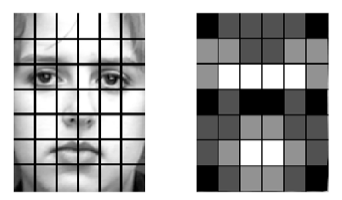Comparing 2 LBPs
I am using code from bytefish.de to generate my LBPs. If I generate 2 LBPs and their corresponding histograms, what is the best way to compare them?
This is my code so far:
#include "lbp.hpp"
#include "histogram.hpp"
#include <opencv2/opencv.hpp>
#include "opencv2/highgui/highgui.hpp"
#include "opencv2/imgproc/imgproc.hpp"
using namespace cv;
int main()
{
//template image
Mat temp = imread("Template.jpg",1);
//image to be compared to
Mat match = imread("Match.jpg",1);
Mat dst,dst2; // image after preprocessing
Mat lbp,lbp2; // lbp image
Mat hist,hist2;
//Convert to gray
cvtColor(temp, dst, 6);
cvtColor(match, dst2, 6);
//remove noise
GaussianBlur(dst, dst, Size(5,5), 5, 3, BORDER_CONSTANT);
GaussianBlur(dst2, dst2, Size(5,5), 5, 3, BORDER_CONSTANT);
//gets the lbp
lbp::ELBP(dst,lbp,1,8);
lbp::ELBP(dst2,lbp2,1,8);
// normalize(lbp2, lbp2, 0, 255, NORM_MINMAX, CV_8UC1);
//normalize(lbp, lbp, 0, 255, NORM_MINMAX, CV_8UC1);
//get histograms
lbp::histogram(lbp,hist,255);
lbp::histogram(lbp2,hist2,255);
//comparing the 2 LBP histograms
double compareHist = cv::norm(hist-hist2);
cout<<compareHist<<endl;
waitKey(0);
return 0;
}
Basically it gives me a quantifiable number as to how similar these two images are. My question is, how do I improve this result? Whats a better way of acheiving a quantifiable number based on how similar 2 LBPs are? Or is the way I am doing it even right?
Thanks.






those histograms will be quite sparse, so rather try spatial_histogram to improve (get longer feature vectors).
also, maybe cv::compareHist(a,b,HISTCMP_HELLINGER);
if you want classification, and got enough data, you could even train an SVM